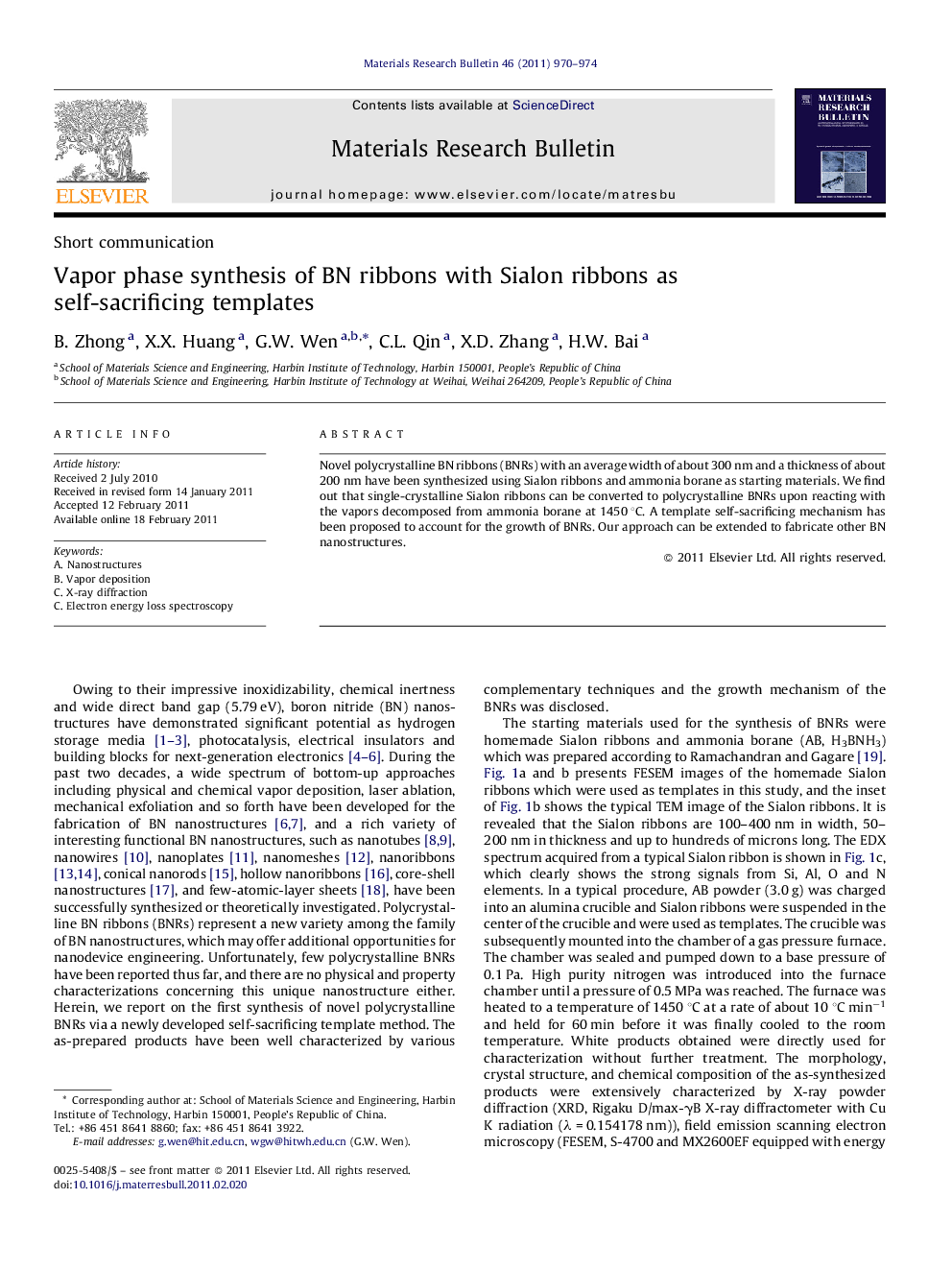| Article ID | Journal | Published Year | Pages | File Type |
|---|---|---|---|---|
| 1489469 | Materials Research Bulletin | 2011 | 5 Pages |
Novel polycrystalline BN ribbons (BNRs) with an average width of about 300 nm and a thickness of about 200 nm have been synthesized using Sialon ribbons and ammonia borane as starting materials. We find out that single-crystalline Sialon ribbons can be converted to polycrystalline BNRs upon reacting with the vapors decomposed from ammonia borane at 1450 °C. A template self-sacrificing mechanism has been proposed to account for the growth of BNRs. Our approach can be extended to fabricate other BN nanostructures.
Graphical abstractNovel polycrystalline BN ribbons (BNRs) with an average width of about 300 nm and a thickness of about 200 nm have been synthesized using Sialon ribbons and ammonia borane as starting materials. We find out that single-crystalline Sialon ribbons can be converted to polycrystalline BNRs upon reacting with the vapors decomposed from ammonia borane at 1450 °C. A template self-sacrificing mechanism has been proposed to account for the growth of BNRs.Figure optionsDownload full-size imageDownload as PowerPoint slideResearch highlights► Novel polycrystalline BN ribbons have been synthesized. ► Sialon ribbons can be etched out by vapors decomposed from ammonia borane. ► A template self-sacrificing mechanism is responsible for the growth of BN ribbons.
